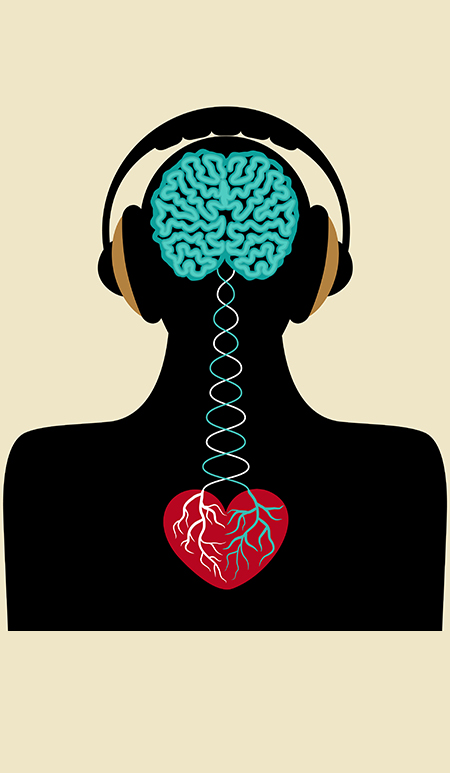 Your mind goes back there… even without noticing.
Your mind goes back there… even without noticing.
The sights…
The sounds…
The smell…
Or maybe it’s more subtle…
Like how you freeze on the inside when someone raises their voice…
Or your internal struggle when you fear you might be disappointing someone…
Or the general sense that there’s “something wrong” with you.
You probably wish you could change ALL of it…
And you’ve tried!
To talk yourself out of it…
To “move on”…
To feel more in control…
You’ve probably turned your life upside down to keep others (and yourself) from noticing.
 Has avoiding “the bad stuff” become your life’s focus?
Has avoiding “the bad stuff” become your life’s focus?
“I mostly want to be at home.”
“I can’t go to that place… ever.”
“I’m dreading sleep tonight because those nightmares terrify me.”
“I need to drive, or I’ll feel out of control.” Or “I cannot drive anymore (or only with my “safe” person).”
The weird thing about trauma is that it can turn the volume up too loud on life or down too low.
“I’ll have another drink or bowl of ice cream. At least there’s something to take the edge off things.”
You’ve probably noticed for a while now that you’ve lived a “smaller,” more limited life. It’s not that you want to; it’s just about survival.
 There is hope!
There is hope!
We recognize all the big and small ways trauma can throw your life off track. It can be a big trauma that rocks your life in an instant… or the subtle and growing awareness that how you grew up wasn’t that healthy.
You’ll first notice at the Center for Intention & Focus that you’ll be welcomed into this supportive space. Please, come just as you are. You will be asked about your life and experiences, and you are free to talk or not talk about them. Rome wasn’t built in a day, and neither will the warm, supportive relationship you develop with your counselor.
Like many complex challenges, treating trauma in several ways is best. We have various approaches to help you turn those “ghosts” into “ancestors.”
Neurofeedback
Neurofeedback lets your brain process your trauma without talking about it, rewiring itself as you sleep.
Neurofeedback, also known as QEEG Biofeedback, measures an individual’s brainwaves. I’ll conduct a thorough assessment that includes mapping your brain with a baseline QEEG, neuropsychological and psychological assessment, and initial interview. Then, we will begin your Neurofeedback training (brain training).
To boil down how this works, the QEEG will monitor your brain at certain locations where the electrodes are placed.
I will tell the computer to either reinforce or inhibit certain brain wave frequencies, and when your brain is firing in the desired frequencies, you will get rewarded with either video or sound feedback. Your job is to simply celebrate when you get that positive feedback and notice how your body feels when you get positive feedback.
Your experience is simple: come to my office and have me or a technician hook up electrodes to the parts of the brain we will train. Attaching the electrode includes wiping the area with rubbing alcohol and then rubbing the area of the scalp and ears with NuPrep (a gritty paste that cleans off dirt and oil) and then applying the electrode with electrode paste (Ten20) to the scalp where we will train. Skin exfoliation is free with the service!
Once the electrodes are attached, we will train with your eyes open or closed. If you are training with your eyes open, you will watch a video (usually a lecture or a nature video). The video will be clear and big when your brain responds the way we want it to and will shrink and get fuzzy when it does not respond the way the training protocol desires.
During eyes closed training, you will sit in a chair and listen to a talk or music. When your brain responds in the desired way, the sound will be at a pleasant level and clear. When your brain does not respond the desired way, the sound will get much quieter and less clear. You will typically start training for five minutes, and then we will take a break. You will train for about 20 minutes during the initial sessions. As you receive feedback from the computer, your brain learns when it is firing in more optimal states.
What we are doing is helping to change your brain by celebrating when it is firing in the desired way. This taps into neuroplasticity (our brain’s ability to learn and adapt to changing environments). Through Neurofeedback, we are helping you train your brain, using one of the brain’s superpowers (the ability to learn). The interesting thing about using Neurofeedback to help with trauma is that the training allows the brain to shift dominant firing patterns and “relax.” When this happens, the brain can process the trauma during sleep (likely through REM Sleep). This process helps you digest your trauma, fundamentally changing your brain’s response to the trauma.
However, this process is not quick or easy, and Neurofeedback may require 60 sessions or more (sometimes up to 100). This is because brains have sometimes been stuck in these less-than-ideal patterns for decades. Your brain has done this to help you survive. However, these mental maps and ways of firing are outdated, and the solution has become the problem. Neurofeedback can help and offers the possibility of making lasting changes.
Please reference my page on Neurofeedback to learn more.
 Heart-Rate Variability – Biofeedback (HRV-BFB)
Heart-Rate Variability – Biofeedback (HRV-BFB)
This technique helps you calm down and support your nervous system. Heart Rate Variability – Biofeedback is the process of learning to breathe so that it causes greater variability in your heart rate. Why should you care? HRV measures your Central Nervous System health (your brain and spinal cord). My wife is a labor and delivery nurse. The hospital staff knows if a fetus is distressed when the HRV becomes less variable. Using a sensor on your ear, a device can measure your heart rate, and through the computer or phone, your HRV can be measured. When you are breathing more optimally, your HRV will increase. Through continued training, you can continue to improve your HRV. The best way to increase HRV is marathon training (which may or may not be an option for you now).
HRV-BFB works because it targets your Vagus nerve (cranial nerve 10). The Vagus nerve goes widely throughout your body (Vagus means wandering in Latin), specifically connecting the brainstem to the heart and the GI system. One of the things I have learned over the years is that trauma affects the body, and so to address trauma, we should address the body and the brain. Dr. Bessel van der Kolk (one of the worldwide leaders and experts in trauma treatment) writes about this phenomenon and the efficacy of Neurofeedback and HRV-Biofeedback in his book, The Body Keeps Score.
To use some Neuroscience language, Neurofeedback is a top-down approach that targets more voluntary control in the brai. HRV-Biofeedback is a bottom-up approach meaning less voluntary. One of the fascinating things I learned about the Vagus nerve is that science used to believe that most communication originated from the brain and was sent to the heart. Science knows 70% of communication is sent from the heart to the brain. This once again illustrates the importance of the mind-body connection and working holistically.
 Prolonged Exposure (PE)
Prolonged Exposure (PE)
This is a more traditional (but evidence-based) approach to PTSD. We will do three things with Prolonged Exposure: breathing, in vivo (in-life), and imaginal exposure. The breathing aspect is best approached through HRV-Biofeedback mentioned above. Through in-vivo exposure, we will create a list of situations in life that are objectively safe but that cause fear or avoidance in you. We will rank them in terms of discomfort, and then we will start by going to these places and remaining for 30-45 minutes until the discomfort goes down significantly (going to places like the mall).
Through repeated practice of the exposure, our brain learns that these places are ok. You will become more resilient and learn from your direct experience that you can live a much bigger life than what you have been experiencing. The last aspect is imaginal exposure. This involves going back to the traumatic event and remembering with sensory and emotional details this event (this can be a very challenging task!) Together, we will go through the memory in detail and tell and retell the story for 30 minutes. You will record our session and then take it home to listen to the recordings once per day.
I imagine you have been tempted to stop reading at some point during this prolonged exposure discussion. I choose to do this work because of the tangible benefits and shifts in my clients’ behaviors that I have witnessed. For example, I have seen clients change from a long-standing pattern of avoidance of physical intimacy to desiring and initiating intimacy with their partner. I appreciate that PE is not that it reduces symptoms (which it often does) but how clients who complete the treatment start living a bigger life. A life that is not dictated by avoidance and fear but by freedom.
The program is a good amount of work at home and during sessions. But the payoff fundamentally changes how you relate to fear and finally feel like yourself again. I use prolonged exposure for individuals with PTSD (a specific, traumatic event that still evokes fear and avoidance). But I use portions of exposure with individuals who have experienced neglect or forms of developmental trauma (but I don’t use exposure in quite the same way because fear and horror are not the primary experiences).
ACT – our ever-present guide
All the above work is also guided by my Acceptance and Commitment Therapy (or ACT) approach.
I will use the tools of mindfulness, willingness, and values to help us through the process of approaching your trauma.
Together, we will help you move toward a more open, aware, and engaged life. Visit my ACT page to learn more.
I’ve seen countless clients find new vitality in their life!
Some changes include enjoying sex again, riding as a passenger in a car without fear, reducing drinking, reestablishing family connections, and taking on more challenging roles at work.
You learn to reengage with life again.
Let’s help you can move from a narrow world of avoidance to a bigger one full of color and possibilities!
You’ve come to the right place.
The day your world changed cannot be undone (Lord knows, I wish I could take it away), but it is possible to live a life unshackled by trauma.
Working together, we’ll develop a connected relationship, and I’ll be your helpful guide as you grow into the person you want to be.
It would be my joy and privilege to walk beside you on your healing journey.
When you’re ready to start that journey, call (832) 831-0178.

